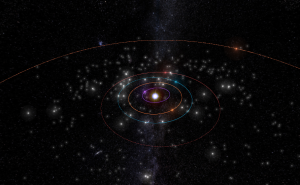Peter Lobner
On 25 November 2015, the “U.S. Commercial Space Launch Competitiveness Act” was signed into law, and fundamentally changed the commercial U.S. space industry. The law consists of four parts:
- Title I: “Spurring Private Aerospace Competitiveness and Entrepreneurship Act of 2015,” or, “SPACE Act of 2015”
-
- Limits regulation of the commercial space launch industry for the next decade.
- Rather than increasing government regulations now, the U.S. commercial space transportation industry is charged with developing, “voluntary consensus standards or any other construction that promotes best practices.”
- Beginning on December 31, 2025, DOT may propose new regulations
- Title II addresses DOT’s authority to license private sector parties to operate private remote sensing space systems.
- Title III renames the Office of Space Commercialization as the Office of Space Commerce and specifies the roles of this office.
- Title IV: “Space Resource Exploration and Utilization Act of 2015,” specifies:
-
- “Any asteroid resources obtained in outer space are the property of the entity that obtained them, which shall be entitled to all property rights to them, consistent with applicable federal law and existing international obligations.”
- “A U.S. commercial space resource utilization entity:
- Shall avoid causing harmful interference in outer space, and
- May bring a civil action in a U.S. district court for any action by another entity subject to U.S. jurisdiction causing harmful interference to its operations with respect to an asteroid resource utilization activity in outer space.”
- This Act includes a “Disclaimer of Extraterritorial Sovereignty”
- While commercial rights are specified in the Act, the U.S. “does not thereby assert sovereignty or sovereign or exclusive rights or jurisdiction over, or the ownership of, any celestial body.”
You can read a summary and the entire Act at the following link:
https://www.congress.gov/bill/114th-congress/house-bill/2262
To get a perspective on potential opportunities for asteroid mining, check out Asterank, which is a database on over 600,000 asteroids at the following link:
Many are “near-Earth” asteroids, with orbits that approach or cross Earth’s orbit.
Asterank includes important data such as asteroid mass, composition, and estimates of the costs and rewards of mining specific asteroids. Asterank was created and is maintained by Ian Webster. The firm Planetary Resources acquired Asterank in May 2013.
Once you’ve determined your target asteroid, you can plan to fetch it with the help of the 2012 “Asteroid Retrieval Feasibility Study” by the Keck Institute for Space Studies, which you can download from the following link:
http://www.kiss.caltech.edu/study/asteroid/asteroid_final_report.pdf
Planetary Resources’ business focus is on Earth observation and asteroid prospecting. You can read about the technologies they currently are developing to support asteroid prospecting at the following link:
http://www.planetaryresources.com/asteroids/#asteroids-intro
As noted by Planetary Resources, “near-Earth asteroids are the “low hanging fruit of the Solar System.” Their website identified eight candidate targets of interest.
With the reduced regulatory risk offered by the U.S. Commercial Space Launch Competitiveness Act, investors are certain to take a more favorable view toward making long-term investments in commercial launch vehicles and asteroid mining technologies. It will be years before commercial asteroid prospecting missions become a reality and much longer before the real economics of asteroid mining are known. Asteroid mining will require very large, long-term investments, but this isn’t science fiction any more.
